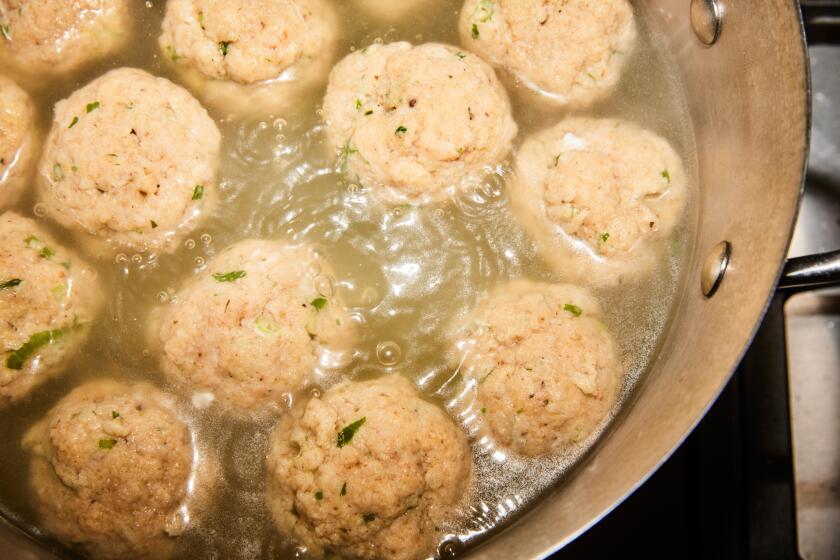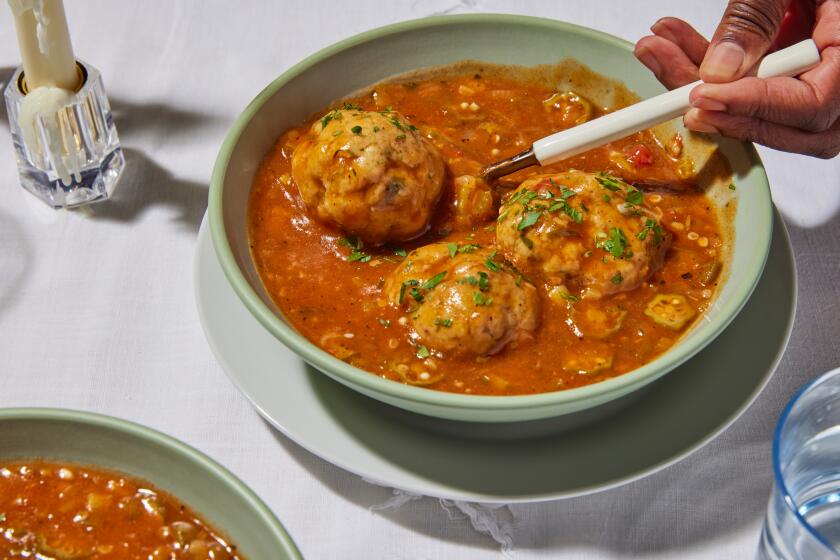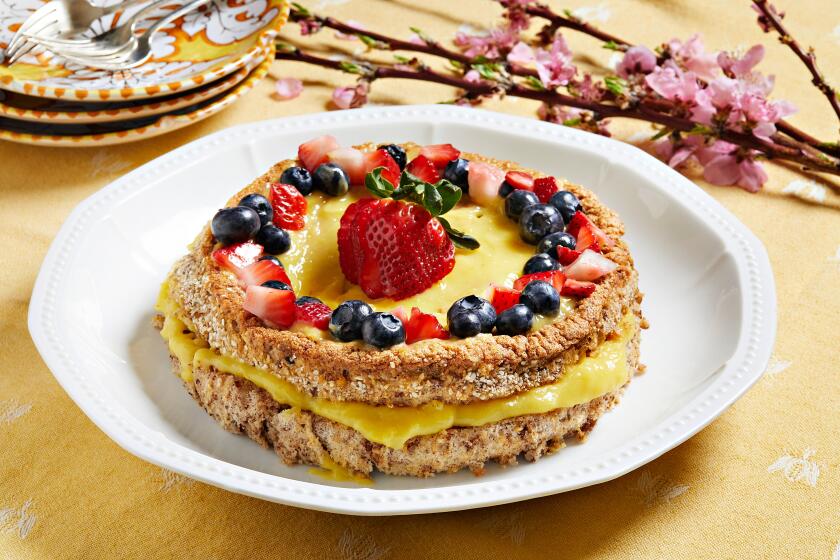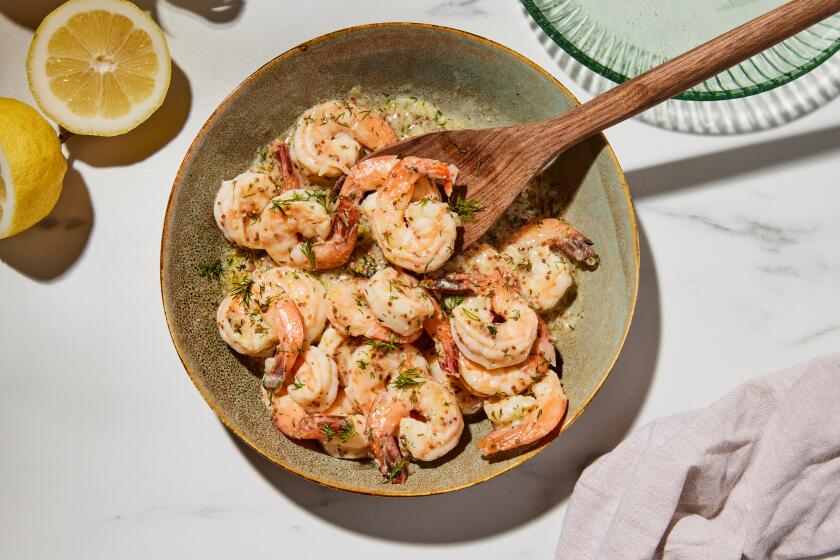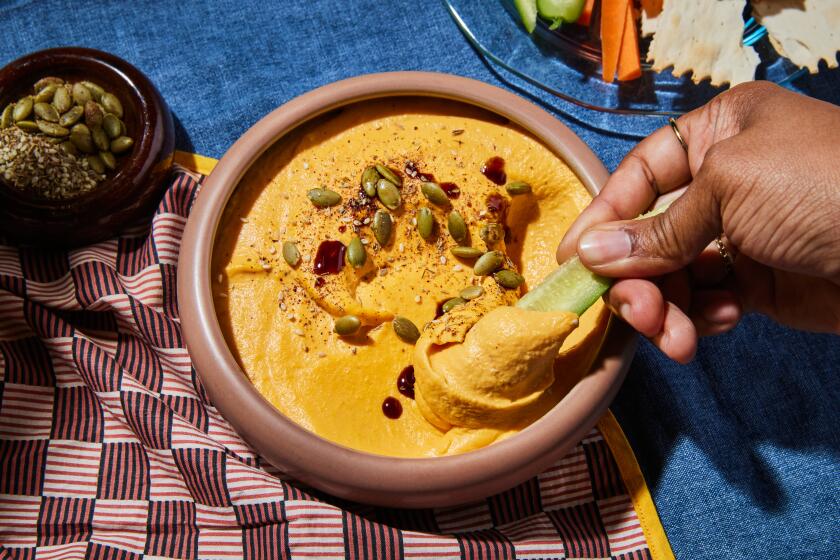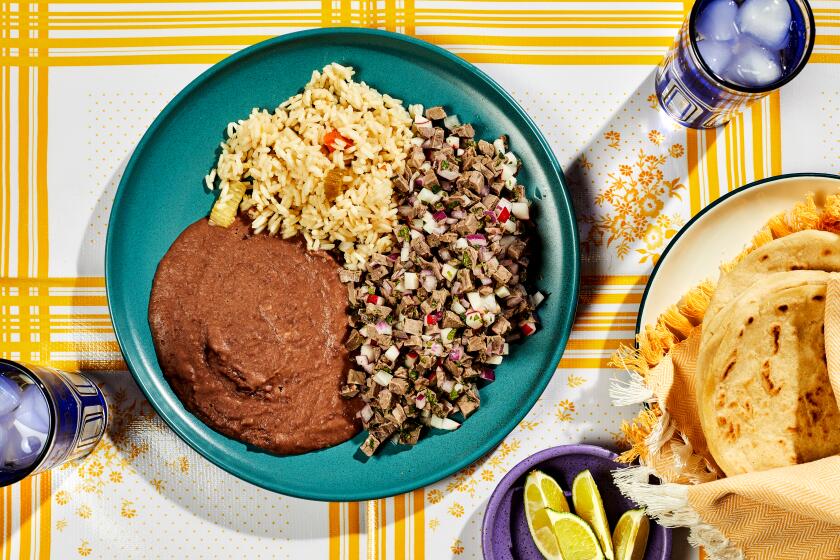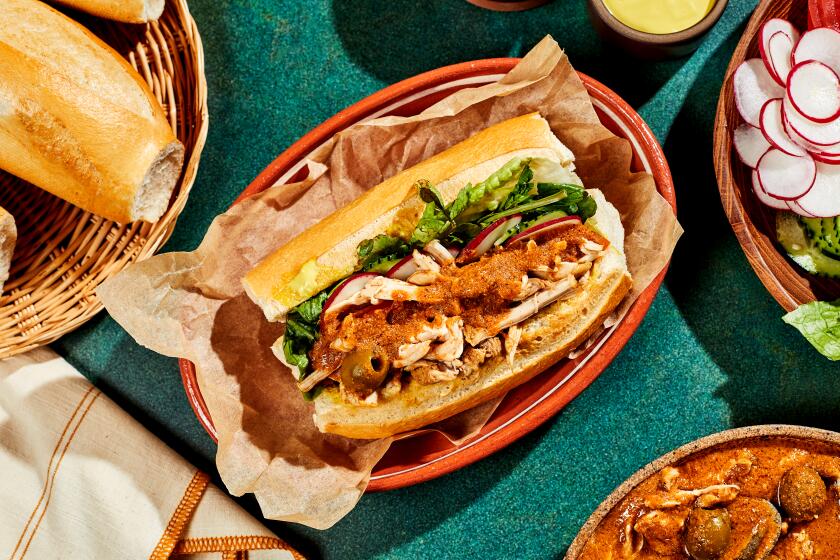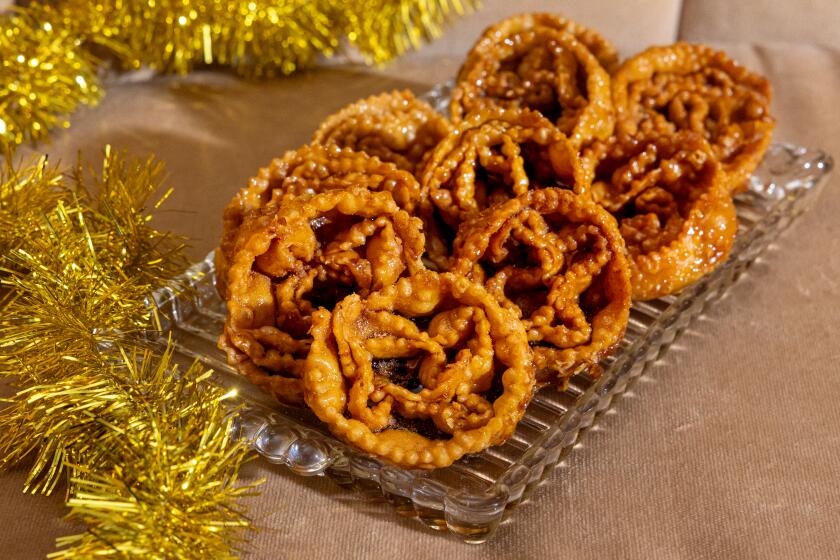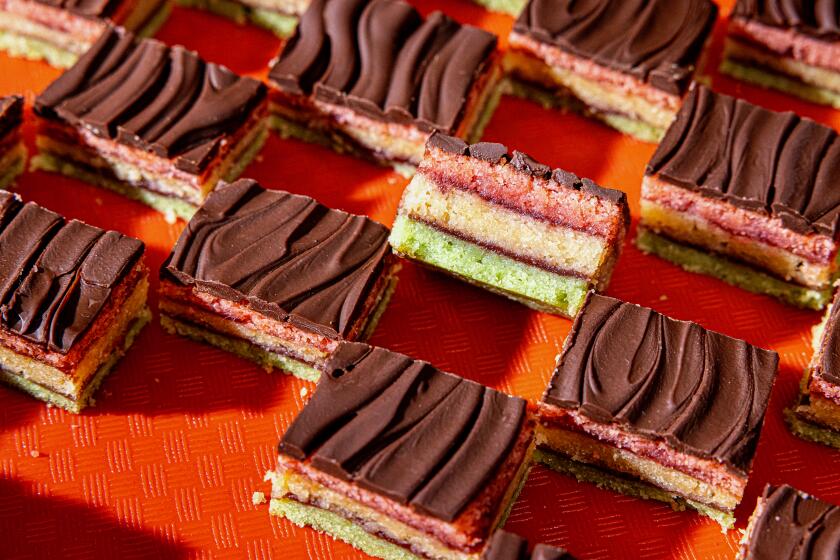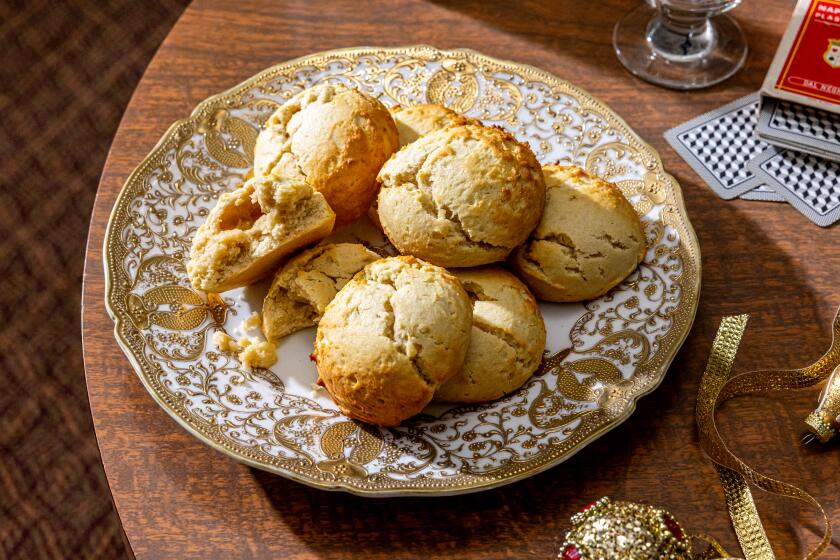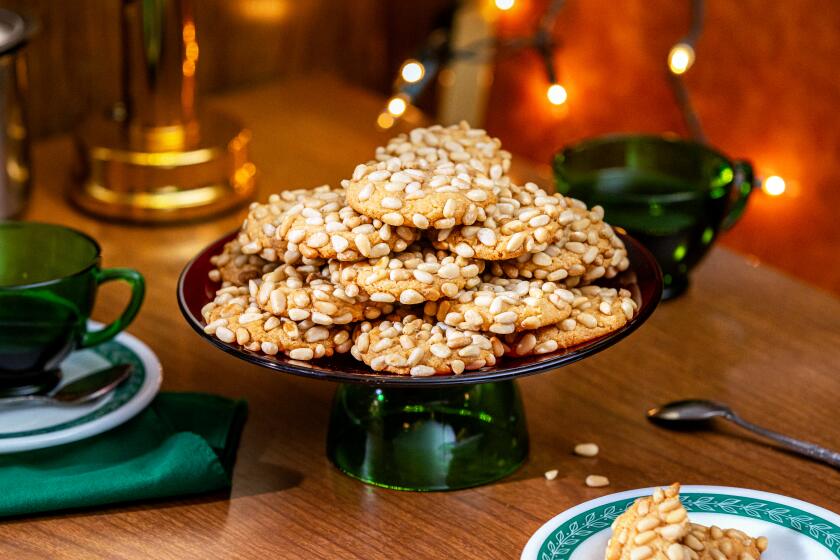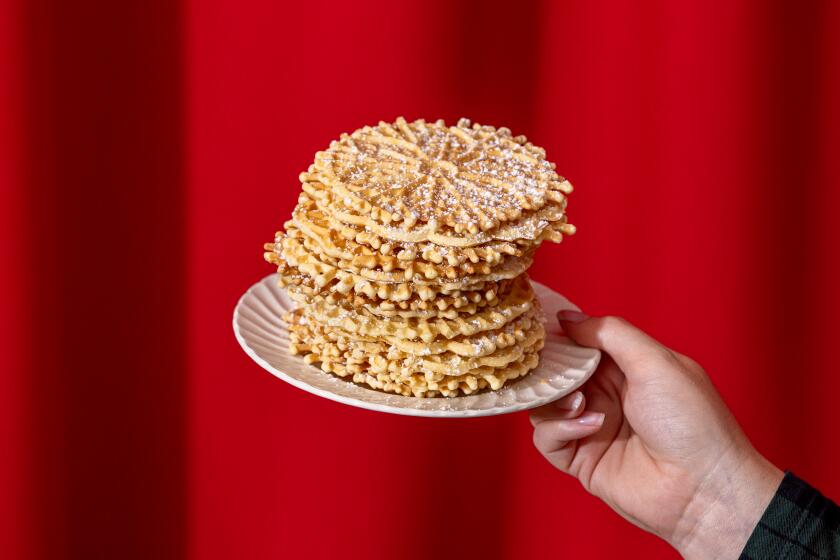Bittersweet chocolate tartufo with olive oil gelato and olive oil-fried croutons
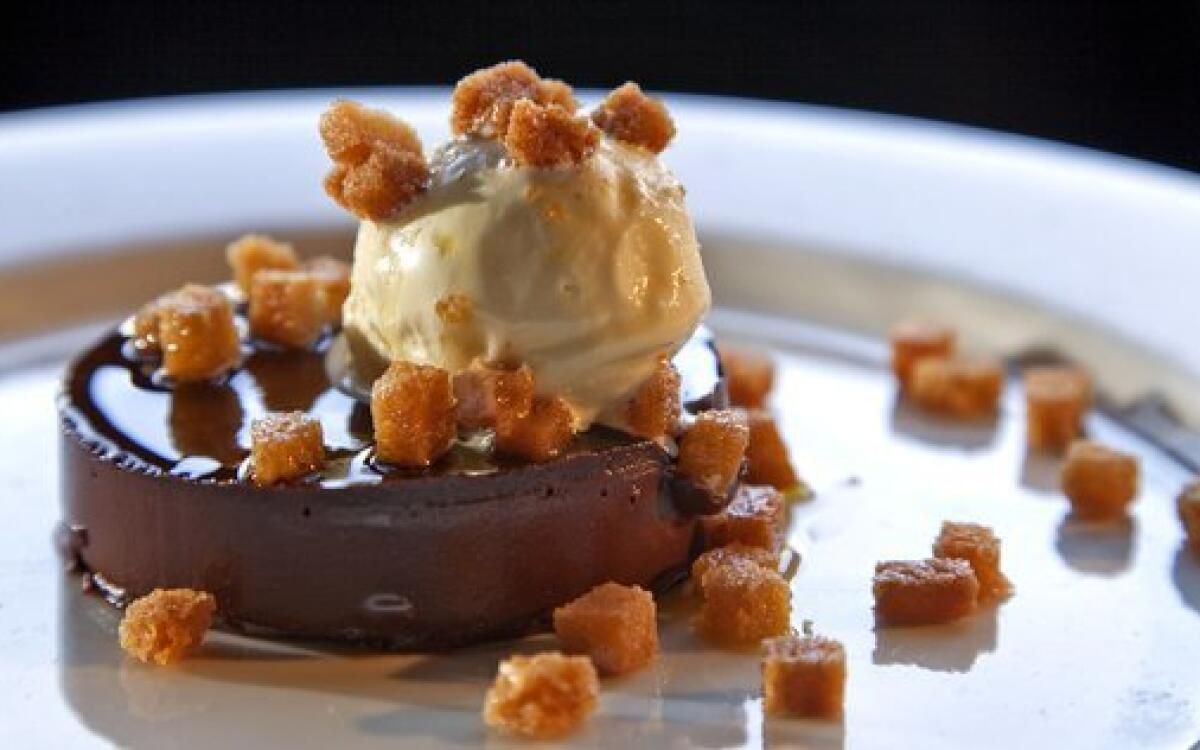
When used in a dessert, the flavor of the oil can be the perfect complement to the simplest dishes. Chocolate tartufo with olive oil-fried bread was developed by Dahlia Narvaez, Mozza’s executive pastry chef. Sold as I was on the idea of using olive oil in dessert, I never would have thought to put chocolate and olive oil together. They turn out to complement each other really well.
Because the olive oil is not cooked to make the gelato, this is a place to splurge on the quality of the olive oil you use. Some of my favorite brands are: Alziari, Capezzana, Castello di Ama, Fontodi, Monini DOP, Nunez de Prado and Olio Verde.
From the story: Master Class: Nancy Silverton opens up to olive oil in desserts
To make the croutons, heat the oil in a large saute pan over medium-high heat until it is almost smoking and slides easily in the pan, 2 to 3 minutes. Line a plate with paper towels. Add the croutons to the oil and cook until golden brown, 30 to 40 seconds. Use a slotted spoon to remove the croutons to the prepared plate and season them with salt. If the croutons appear greasy, transfer them to a clean paper towel to drain further.
When ready to serve the dessert, remove the baking sheet with the tartufos from the refrigerator and set aside to come to room temperature, 20 to 30 minutes. Place one tartufo in its mold on an entree-sized plate. Using a blowtorch or warm towel, quickly warm the sides of the metal molds and carefully lift off the mold. Garnish the top with a few pieces of the olive oil-fried croutons. Add a scoop of the olive oil gelato, and garnish the top with more croutons and a drizzle of good extra-virgin olive oil. Repeat with remaining tartufos.
Bittersweet chocolate tartufo
Line a baking sheet with parchment paper. Arrange 8 (3 inches diameter, 2 inches high) metal ring molds evenly on baking sheet. Set aside.
Place finely chopped chocolate in a heatproof, nonreactive bowl. In a small saucepan, bring the heavy cream and creme fraiche to a full boil. Pour over the finely chopped chocolate. Set aside to melt, without stirring, for 20 minutes. Once the chocolate has melted, gently whisk in the softened butter, corn syrup and whisky.
Pour one-fourth cup plus 2 tablespoons of the tartufo filling into ring molds and refrigerate until set, about 30 minutes. Add one tablespoon of warm glaze over the set tartufo, tilting the molded tartufo, shaking it a bit, to make a thin, even covering. Return to refrigerator to set glaze until ready to serve.
Chocolate glaze
Cut the chocolate into 2-inch pieces. In a heatproof bowl, melt the chocolate with corn syrup and butter over barely simmering water. (The water should not touch the bottom of the bowl or the chocolate will burn.) Turn off the heat, stir in brandy and let mixture stand over warm water until ready to use.
Olive oil gelato
Fill a large bowl with ice water and set a smaller bowl inside. Set a fine-mesh strainer in the smaller bowl. In a medium bowl, whisk together the egg yolks and cornstarch.
Combine the milk, sugar, milk powder, corn syrup and salt in a 4-quart saucepan and whisk to break up and dissolve the milk powder. Heat the milk mixture over high heat until it begins to bubble, then immediately remove from the heat.
Slowly add one-half cup of the hot milk mixture to the bowl with the eggs, whisking constantly. Continue to whisk in half of the milk, one-half cup at a time, enough to warm the eggs slightly.
Pour the egg and milk mixture into the pot with the milk, return the pot to medium-low heat and cook, stirring constantly with the whisk or a wooden spoon, until the gelato base thickens enough to coat the back of a spoon.
Pour the gelato base through the strainer into the bowl set over ice water and set aside to cool to room temperature. Transfer the base to an airtight container and refrigerate for at least several hours and up to three days.
Remove the ice cream mixture from the refrigerator, pour it into a bowl and stir in the cream and olive oil. Pour the mixture into the bowl of an ice cream or gelato maker, and spin it according to the machine instructions. Serve the gelato straight from the maker or transfer it to an airtight container and place it in the freezer until you’re ready to serve it. Serve the gelato within a few hours of spinning it, before it hardens.
Pullman bread loaves are available at many bakeries and bread stores.
Get our Cooking newsletter.
Your roundup of inspiring recipes and kitchen tricks.
You may occasionally receive promotional content from the Los Angeles Times.

